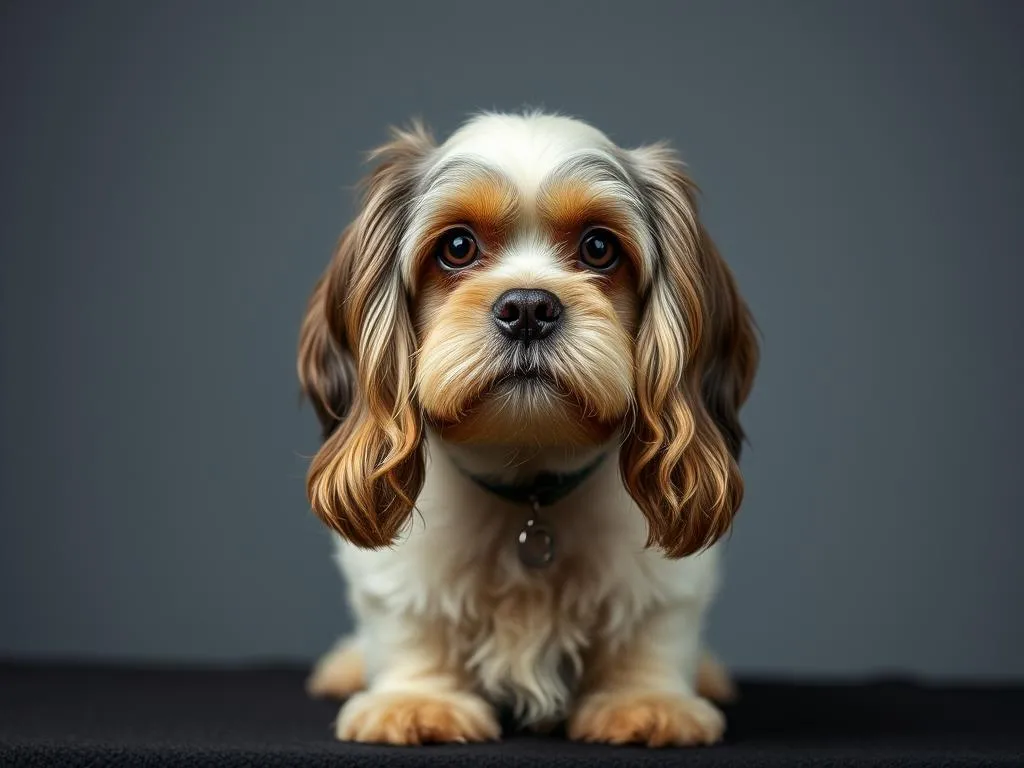
Introduction
Cocker Spaniels are beloved for their affectionate nature, playful spirit, and distinctive long, flowing coats. However, with their beautiful fur comes a responsibility that every dog owner should embrace: grooming. Proper grooming is not just about keeping your Cocker Spaniel looking good; it plays a crucial role in maintaining their overall health and well-being.
Cocker Spaniels come in two main varieties: the American Cocker Spaniel and the English Cocker Spaniel. Each type has unique grooming needs that reflect differences in coat type, length, and texture. Understanding these differences is essential for providing the best care for your furry friend.
Grooming significantly impacts your dog’s hygiene, comfort, and even emotional well-being. Regular grooming sessions can strengthen the bond between you and your pet, making them feel loved and secure.
Understanding Cocker Spaniel Coat Types
Types of Coats
Cocker Spaniels are known for their luxurious coats, which can vary significantly between the American and English varieties.
- American Cocker Spaniels typically have a slightly shorter, more compact coat with a silky texture. They often exhibit a variety of colors, including black, buff, and chocolate, as well as combinations like black and tan.
- English Cocker Spaniels have a longer, wavier coat that can be more challenging to maintain. Their coats can come in solid colors or a mix of colors, including liver, orange, and black.
Grooming Needs Based on Coat Type
Each coat type has specific grooming requirements. American Cocker Spaniels usually need brushing several times a week to prevent tangles, while English Cocker Spaniels may require daily brushing due to their longer fur. Seasonal changes can also affect grooming needs, as shedding may increase in spring and fall, requiring more frequent brushing to manage loose hair.
Essential Grooming Tools for Cocker Spaniels
Brushes and Combs
Investing in the right grooming tools is vital for maintaining your Cocker Spaniel’s coat.
- Slicker Brushes: Excellent for removing tangles and mats, especially in the undercoat.
- Pin Brushes: Ideal for longer coats, helping to distribute natural oils and keep the coat shiny.
To detangle, use a wide-tooth comb initially, then follow up with a finer comb to smooth out the coat.
Clippers and Trimmers
When it comes to trimming, having the right tools is essential.
- Clippers: Look for professional-grade clippers designed for pet grooming. Brands like Andis and Wahl are popular choices.
- Safety Tips: Ensure clippers are sharp and clean. Always use a guard to prevent cutting too close to the skin.
Bathing Supplies
Bathing is a crucial part of grooming.
- Shampoos and Conditioners: Choose hypoallergenic and gentle formulas specifically designed for dogs to avoid skin irritation. Brands like Earthbath or PetHead are often recommended.
- Drying Tools: Use absorbent towels or a pet-safe blow dryer on a low setting to avoid overheating.
Nail Care Tools
Regular nail trimming is essential for your Cocker Spaniel’s comfort and health.
- Nail Clippers: Scissor-style clippers are often preferred; however, some owners find electric grinders easier to use.
- Importance: Keeping nails trimmed prevents painful splitting and ensures your dog can walk comfortably.
Step-by-Step Grooming Guide
Preparing for Grooming
Setting up a comfortable space is the first step in a successful grooming session.
- Grooming Area: Create a calm environment away from distractions. A non-slip surface can help your dog feel secure.
- Gather Tools: Ensure all necessary tools are within reach before you begin, including brushes, clippers, shampoo, and towels.
Bathing Your Cocker Spaniel
Bathing is an essential part of grooming, and the frequency can vary based on your dog’s activity level and coat condition.
- Frequency: Generally, a bath every 4-6 weeks is adequate, but more frequent bathing may be needed if your dog is particularly dirty or has skin conditions.
- Step-by-Step Instructions:
- Brush your dog to remove tangles before bathing.
- Use lukewarm water to wet the coat thoroughly.
- Apply a small amount of shampoo, lather, and rinse well.
- Follow with conditioner if needed, ensuring it is also rinsed out completely.
- Gently towel-dry your dog, followed by using a blow dryer on a low setting if your dog tolerates it.
Brushing Techniques
Brushing is vital to prevent matting and keep the coat healthy.
- How Often: Brush your Cocker Spaniel at least 2-3 times a week. Daily brushing is recommended for dogs with longer coats.
- Techniques to Avoid Matting: Start at the tips of the hair and work your way up to the roots, using gentle strokes to avoid pulling on the skin.
Ear Cleaning
Cocker Spaniels are prone to ear infections, making ear care essential.
- Importance: Regular ear cleaning helps prevent wax buildup and infections.
- Recommended Products: Use a vet-recommended ear cleanser.
- Technique: Apply the cleaner to a cotton ball and wipe the outer ear gently. Avoid inserting anything deep into the ear canal.
Nail Trimming
Keeping nails trimmed is crucial for your dog’s health.
- How to Trim: Hold the paw firmly but gently, and trim just the tip of the nail. Be cautious of the quick, which is the pink area inside the nail.
- Signs for Trimming: If you can hear your dog’s nails clicking on the floor, it’s time for a trim.
Finishing Touches
After grooming, check for any remaining dirt or tangles.
- Overall Cleanliness: Look over your dog’s coat for any patches that may need further brushing.
- Health Check: While grooming, inspect for lumps, bumps, or skin irritations that may require veterinary attention.
Common Grooming Challenges and Solutions
Dealing with Matting
Matting can be a significant issue for Cocker Spaniels.
- Causes: Mats can form from dirt, debris, or lack of regular grooming.
- Prevention Tips: Regular brushing and using a detangling spray can help prevent mats.
- Removing Mats: Use a slicker brush to gently work through mats, or consult a professional groomer if they are severe.
Skin Issues
Cocker Spaniels can be prone to various skin problems.
- Common Issues: Look out for redness, itching, or unusual odors, which may indicate skin allergies or infections.
- Veterinary Consultation: If you notice persistent issues, consult a veterinarian for advice and treatment.
Behavioral Issues During Grooming
Some dogs may become anxious during grooming.
- Calming Tips: Use a calm tone and take breaks if your dog seems stressed. Gradually desensitize your dog to grooming by introducing tools slowly.
- Positive Reinforcement: Reward your dog with treats and praise to create a positive association with grooming.
Grooming Frequency and Schedule
Ideal Grooming Routine
Establishing a grooming routine tailored to your Cocker Spaniel’s age and activity level is essential.
- Puppies: Start grooming early to acclimate them to the process. Aim for short, gentle sessions.
- Adults: A regular schedule of brushing, bathing, and nail trimming will help maintain a healthy coat.
Seasonal Grooming Adjustments
Grooming needs can change with the seasons.
- Spring and Fall: These seasons often bring increased shedding. Be prepared to brush more frequently during these times to manage loose hair effectively.
Nutritional Considerations for Healthy Skin and Coat
Importance of Diet in Grooming
What you feed your Cocker Spaniel can significantly affect their coat health.
- Nutrition Impact: A balanced diet rich in omega-3 and omega-6 fatty acids is essential for maintaining skin and coat condition.
Recommended Diet for Cocker Spaniels
Choosing the right food can promote a healthy coat.
- Types of Food: Look for high-quality kibble or wet food that lists meat as the first ingredient. Grain-free options can also be beneficial, but consult your vet based on your dog’s specific needs.
Supplements for Coat Care
In some cases, dietary supplements may be beneficial.
- Overview: Fish oil or flaxseed oil supplements can enhance coat health. Always consult your veterinarian before introducing new supplements.
Professional Grooming Services
When to Seek Professional Help
While at-home grooming is crucial, there are times when professional services may be necessary.
- Signs for Professional Grooming: If your dog is heavily matted, or if you’re uncertain about how to trim their coat, a professional groomer can help.
Choosing the Right Groomer
Selecting a qualified groomer is essential for your Cocker Spaniel’s comfort and care.
- Tips: Look for groomers with experience handling Cocker Spaniels, and ask for recommendations from other pet owners.
Cost of Professional Grooming
Understanding the costs associated with professional grooming services can help you budget appropriately.
- Overview: Basic grooming services typically range from $30 to $90, depending on location and the specific services requested.
Conclusion
Cocker Spaniel grooming is an essential aspect of pet care that goes beyond aesthetics. Regular grooming helps maintain your dog’s health, prevents various skin issues, and strengthens the bond between you and your furry friend. By incorporating these Cocker Spaniel grooming tips into your routine, you can ensure your pet remains happy, healthy, and looking their best. Remember, grooming is not just a chore; it’s an opportunity to connect with your beloved pet and ensure their well-being.









